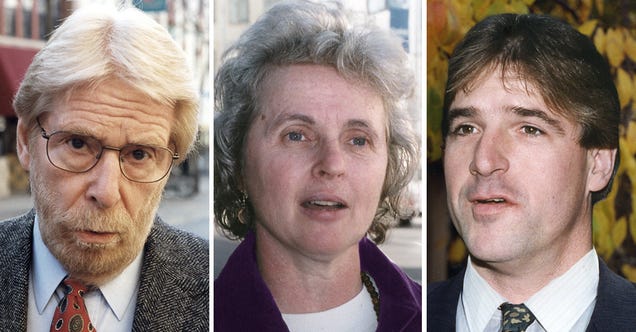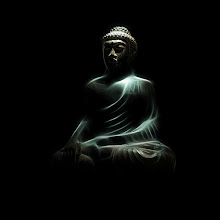Eighty years ago Alabama counties passed a law that allowed their Sheriffs to feed prisoners with a mere $1.75 a day allowance. Today the same is in operation .These Sheriffs are then permitted to augment their salaries with the residue. According to one writer a systematic practice of “Depression-style frugality and reliance on such things as day-old bread, cut-rate vegetables and cheap inmate labor explains why a profit can be earned by feeding men and women what amounts to less than the price of a Coke and a bag of Fritos for an entire day. One sheriff was quoted as saying that “these people eat better here than they eat on the street, and they eat three times a day.”[1] In case you did not recognize, Alabama is one of the fifty states In the USA. Then perhaps you are one of the millions of citizens that believe that prisoners are getting what they deserve and any form of inhumane treatment is good for miscreants. Just to refresh your memory, Article 5 of the declaration of the Universal Declaration of Human Rights reads as follows: “No one shall be subjected to torture or cruel, inhuman or degrading treatment or punishment.”[2]
A wonderful and generous and caring American woman was instrumental in getting this declaration passed while serving as a US delegate and Human Rights Commissioner. She was Eleanor Roosevelt .Without here there might be no UN as we know it today , no Israel, No new deal , justice for blacks via the civil rights movement , nor the vibrant feminist movement . She was a first lady for 12 years during her famous husband reign, but was referred to as “First Lady of the World” by President Truman, in tribute to her human rights accomplishments. Most importantly, she was honored by Gallup’s list of widely Admired People as one of the most admired persons of the 20th century. Her actions I am sure also brought much goodwill for America as a country, as it was seen as a champion, defender, and model for peoples across the globe that were threatened by racial, economic and religious divides. Where other powers failed in their moral obligations to defend the proclaimed universal principles –first enshrined in the UDHR, the United States was seen as a beacon of hope for justice, fairness and equality for all.
Fast forward to today, and we noticed many more states similar to Alabama where the ‘Prison Industrial Complex’ has reared its ugly head. For every 100 in the American population, one is incarcerated. This nation has less than five percent of the world’s population, but almost one fourth of the world’s prisoners. [3] According to data by the International Center for Prison Studies at King’s College London., the United States has 2.3 million criminals behind bars. This is in essence more than any other nation.[4]The question that I wish to consider now is how are these prisoners treated while away from the eyes of the prying public, families, lawyers and hidden digital camera? We tend to be aggrieved at the actions of a few rouge soldiers in Abu Ghraib. Many of us were prepared to offer some semblance of latitude for our hard working soldiers as they stress struggled to protect the nation from the devious eyes and might of foreign terrorist elements. Are we prepared to be so understanding when it occurs at home, especially if it’s towards a close friend or relative? I am doubtful. How about the disparity in justice that is levied along racial lines?
The following are findings of Human Rights Watch on the state of prisons and Prisoners in the USA today: In American prisons today, wanton staff brutality and degrading treatment of inmates occur across the country with distressing frequency. A federal judge in 1999 concluded that Texas prisons were pervaded by a “culture of sadistic and malicious violence.” In 1995, a federal judge found a stunning pattern of staff assaults, abusive use of electronic stun devices guns, beatings, and brutality at Pelican Bay Prison in California, and concluded the violence “appears to be open, acknowledged, tolerated and sometimes expressly approved” by high ranking corrections officials. In recent years, U.S. prison inmates have been beaten with fists and batons, stomped on, kicked, shot, stunned with electronic devices, doused with chemical sprays, choked, and slammed face first onto concrete floors by the officers whose job it is to guard them. Inmates have ended up with broken jaws, smashed ribs, perforated eardrums, missing teeth, burn scars—not to mention psychological scars and emotional pain. Some have died. Both men and women prisoners—but especially women—face staff rape and sexual abuse. Correctional officers will bribe, coerce, or violently force inmates into granting sexual favors, including oral sex or intercourse. Prison staff have laughed at and ignored the pleas of male prisoners seeking protection from rape by other inmates. When Florida inmate Frank Valdez died in 1999, every rib in his body was broken, his corpse bore the imprint of boot marks, and his testicles were badly swollen; guards admitted having struggled with him, but denied they had used excessive force. They claimed most of his injuries had been “self-inflicted.” In Maricopa County, Arizona, a sheriff who dresses male jail inmates in pink underwear introduced live “jail cam” broadcasts on the Internet in 2000. Three cameras covered the holding and searching cells of the jail, including shots of strip searches, inmates bound in “restraint chairs,” and even, for a while, unobstructed views of women using the toilet. The broadcasts ended up being copied onto web porn sites.
Even detained children and youth are not immune from staff brutality and abuse. They too are kicked, beaten, punched, choked, and sexually preyed upon by adult staff. The Maryland State Police recently filed criminal assault charges against staff at a youth facility in Maryland because of an incident in which one guard restrained a youth while the three others kicked him and punched him in the face. In January 2004, the U.S. Department of Justice reported on terrible conditions at Arizona’s juvenile detentions centers, including sexual abuse of the children by staff members (and fellow inmates) that occurs “with disturbing frequency” and a level of physical abuse that is ”equally disturbing.” [5]
These are frightening but true statistics. They are not meant to cast blame on any one , but merely to shock the sensibilities and conscience of good people to do something so as to alleviate the plight of suffering and often times unfortunate. As we observe the media in its daily attempts to address the issue of human rights, let us develop a more skeptical eye and ask ourselves why more attention is not placed on this anomaly as reflected by the prison industrial complex. As we witness the different attitudes to justice is it is reflected by race and white color as opposed to blue color crimes. When next you see a though talking Governor, Senator , Congressman or high -end celebrity desperately try to get some preferential treatment via a slick well paid lawyer, ask yourself if that treatment is accorded to a lower, middle class ,or immigrant person with limited resources at their disposal. Remember we all have a moral responsibility to speak out, in an effort to eradicate all form of human right abuses. The world watches on , that much you can count on.
--------------------------------------------------------------------------------
[1] JAY REEVES, Alabama sheriffs feed inmates on $1.75 a day, Associated Press Writer, Fri May 16, 7:01 PM ET
[2] Article 5 Universal Declaration of Human Rights,Pg.6, UN DPI, December 10, 1948.
[3] Warren Mass, U.S. Leads World in Prison Population,http://www.jbs.org/trackback/7846
[4]http://www.iht.com/articles/2008/04/23/america/23prison.php?page=3
[5] Jamie Fellner, Esq., Prisoner Abuse: How Different are U.S. Prisons?, http://www.hrw.org/english/docs/2004/05/14/usdom8583.htm
-









No comments:
Post a Comment